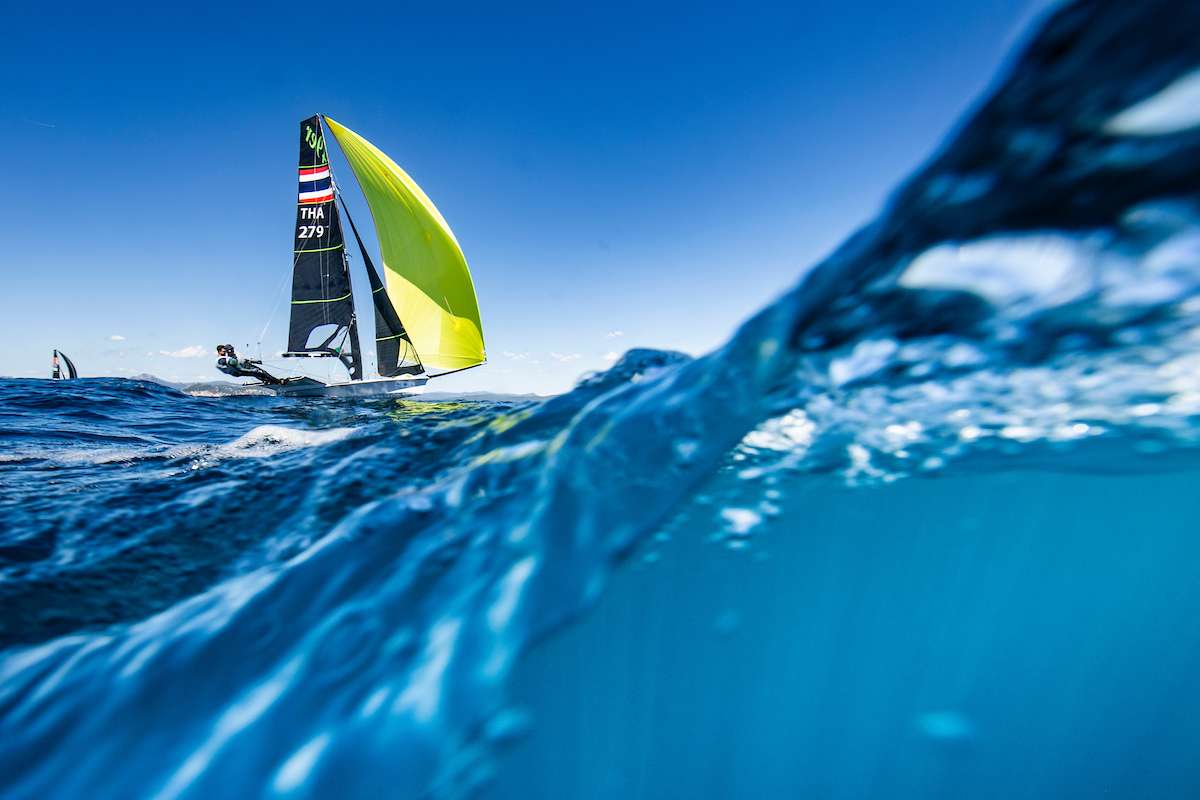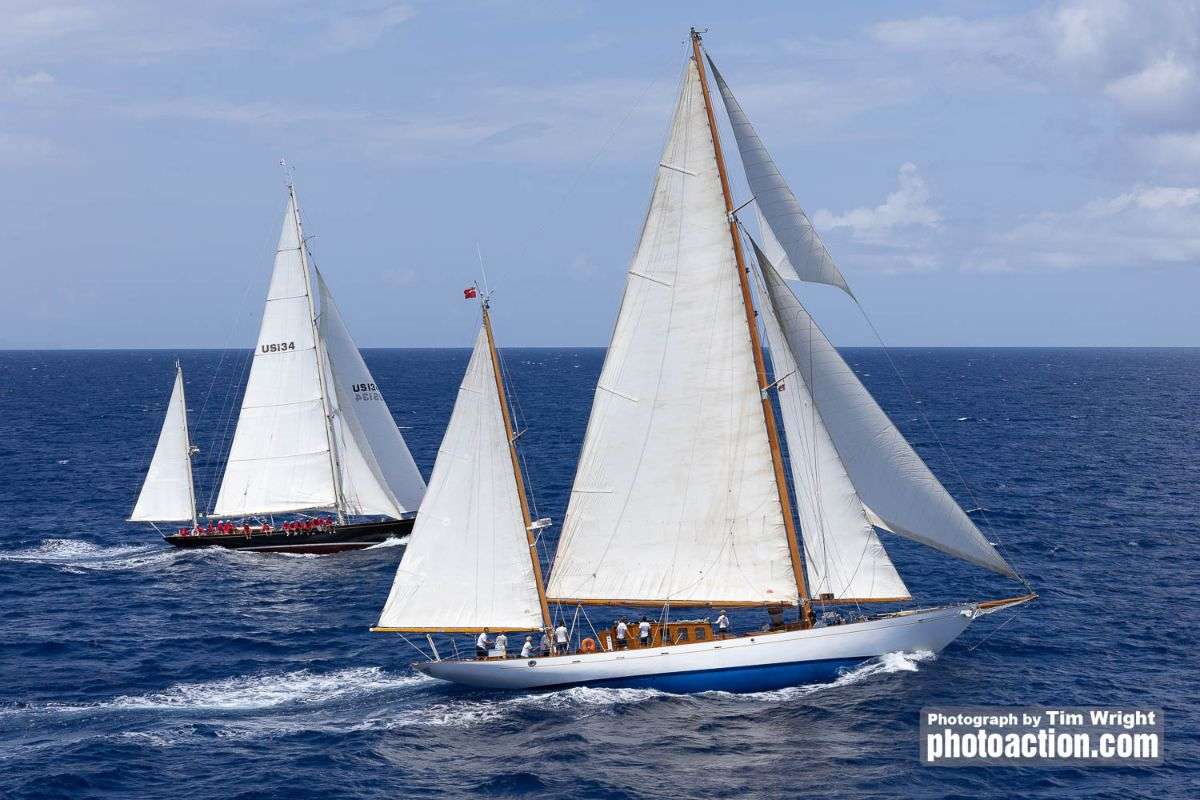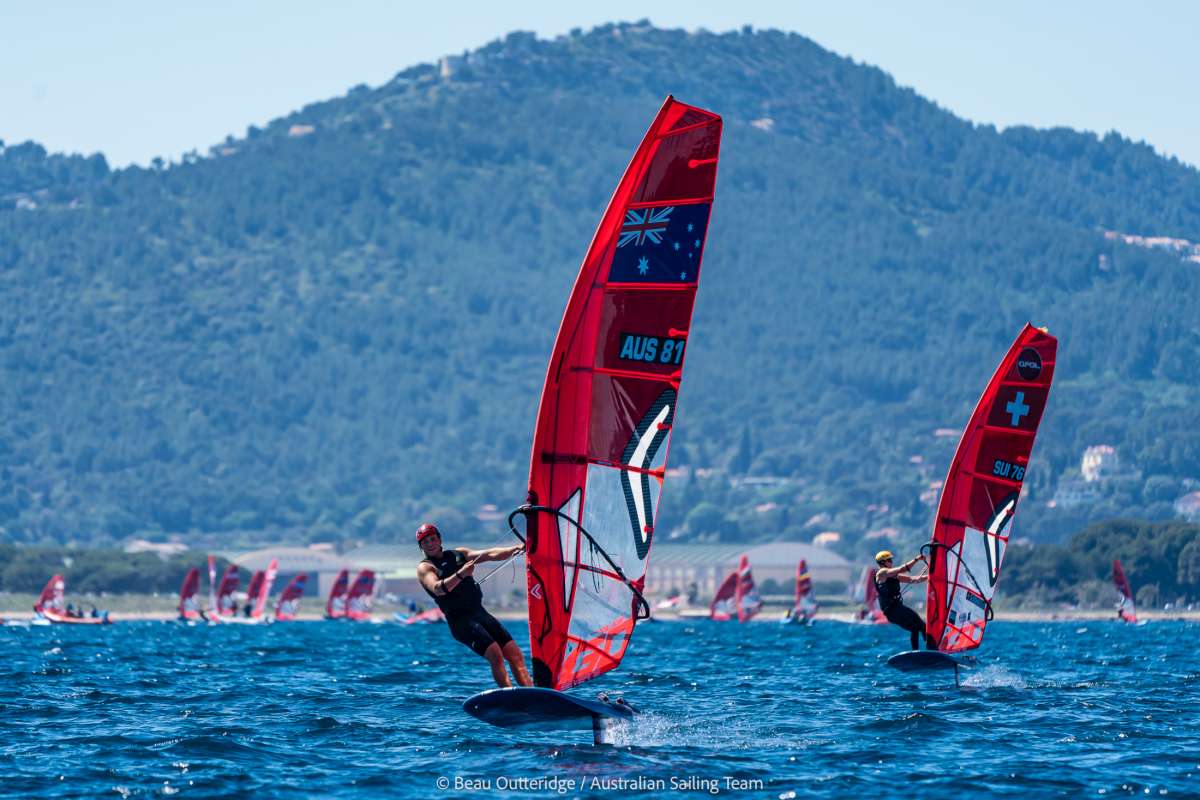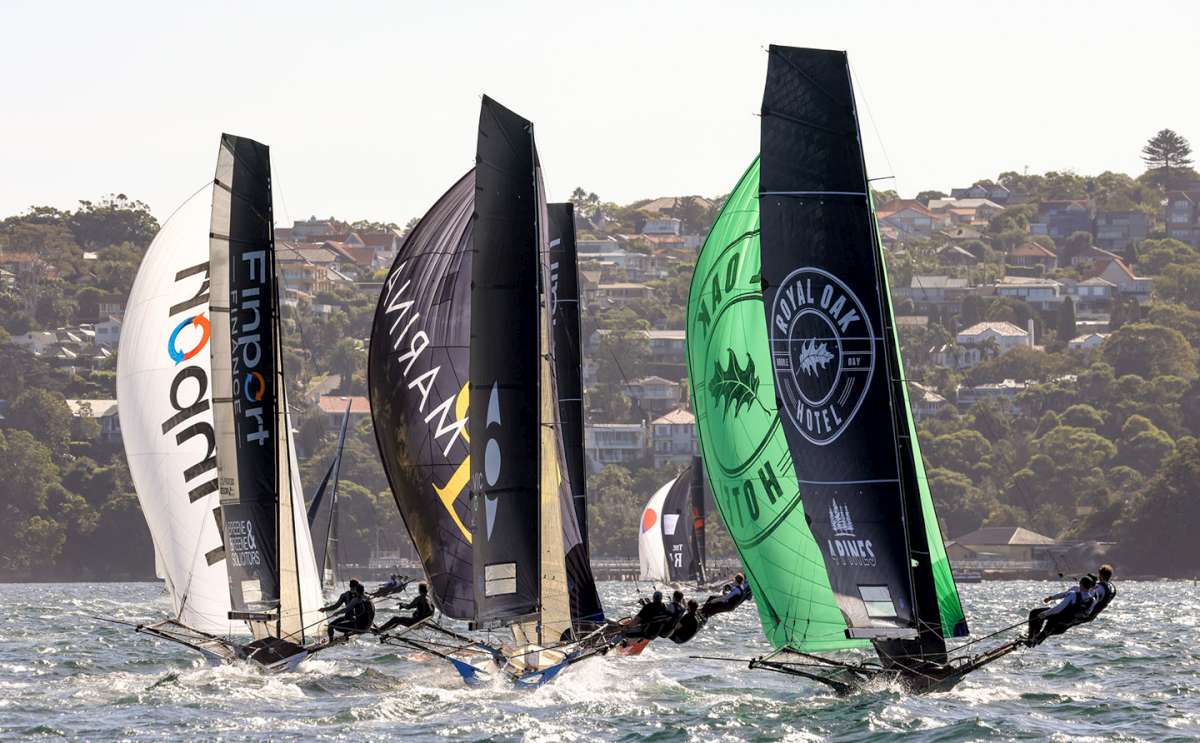Kenneth Grahame wrote in his wonderful children's book, ‘The wind in the willows’ “believe me, my young friend, there is nothing – absolutely nothing – half so much worth doing as simply messing about in boats.” I think Ratty got it right – to a timber boat tragic, there is no better way to describe the joys of owning such a beautiful 'living' thing.
This is the story of the bringing back to life of a traditional timber yacht, New Silver Gull. Having been left to the elements for too long, she was recovered just in time and restored to be, now, a classic yacht in every way.
The beginning
A bright and sunny day way back in 1989, we had our first look at this dilapidated wreck of a boat, New Silver Gull, looking forlorn and uninviting, tied up to an equally dilapidated jetty, on the banks of the mighty Clarence river town of Ulmarra. 'What were we thinking' was the feedback received from our good sailing mate when he viewed the photographs we brought back from our visit. “You guys are unbelievable”.
Original owners/designers/builders, Harry and Oceana Newton-Scott, both in their late 60's, sailed the Gull from Sydney in 1946 to Chicago via Hobart, Auckland, Fiji, Canton Island, Honolulu, British Columbia, San Francisco, Caribbean and US East Coast and Nova Scotia, to the Great Lakes. Twelve years later, she returned to Australia via the US Intercoastal Waterway, West Indies, Panama and Galapagos, then cruised a number of archipelagos including French Polynesia and Marquesas, Cook Islands and Society Islands, Fiji and Vanuatu. All this with just paper charts, a sextant, compass, trailing log and accurate time keeping device. True sailors!
Prior to our purchase of the Gull, she was used as a sail training and charter vessel plying the waters of Botany Bay, before being taken over by an ABC radio presenter. She was a welltravelled sailing vessel, but badly needed lots of attention and TLC.
Looking at the Gull today, we feel proud and very honoured to be the custodians of this wonderful yacht, it forming a part of Australian blue water history. But it did not happen quickly, nor easily.
Delivery
We moved the Gull from Ulmarra to Ballina for a below waterline survey. All good, money changed hands. We failed, however, to look at the watertightness of the decks and cabin tops.
The delivery trip from Ballina to Gold Coast was epic. Crossing the notorious Ballina bar at daybreak ensured we were left in no doubt of the level of work effort required to bring the Gull back to life. A couple of waves over the deck made life for the cook difficult.
As the interior of the yacht had been totally dismantled by the previous owner and then stacked along the floors from bow to stern, a level of agility and balance was required to ensure the camping stove, delicately placed on top of the pile of rubble, stayed in place. Add to this the need for the cook to share his wet weather jacket by hovering over the stove with arms outstretched, to ensure the burners continued to function as water poured through the deck drowning everything beneath.
The bilge pumps ran continuously.
Fuel for the engine came from two 18 gallon beer kegs tied to the frames with rope. These kegs were subsequently used as trestles to support the two mast rebuild.
Hoisting one of the staysails gave us another matter to consider: each wave we banged into shook the mizzen alarmingly, with showers of splintered wood and rust from the two huge G clamps holding the metal spreader bands and timber spreaders in place and broken pieces of rotten mast timber.
I started to think my mate may have been correct in his summary of our actions – unbelievable.
Concept
New Silver Gull was launched in Sydney in 1939 on the banks of Yowie Bay, where, on a narrow shelf along the water's edge, Harry Newton-Scott, engineer, surveyor and accomplished yachtsman, built a cruising yacht to his own design using input from his good friend and respected yacht designer in America, Fritz Fenger.
With the war making access to essential materials difficult, it took four years to build the yacht. The final completion for the interior was undertaken in Tasmania where the wooden boat building business was less affected.
With no shore power available, hand tools only were used. Access to the work site required all tools and materials had to be delivered by dinghy from the other side of the bay.
This included rafting the twelve metre long planks required for the hull exterior, being towed by an oared dinghy. Midtide would see the water level rise above the yard floors, which was a problem should a tool be dropped; one had to wait for low tide to retrieve.
The timber used for our rebuild, was decided upon by maintaining the original traditional yacht appearance. Spotted gum was used below waterline, Douglas fir above waterline over spotted gum steambent frames. Laid beech decking over Oregon beams and New Guinea rosewood sub-decking. Cedar and mahogany fit out below decks. Spar grade Oregon masts and three Oregon wishbone timber booms.
The dimensions of the yacht now are 16.5m length overall, 4.5m beam, 14.4m LWL, 2.5m draft, 21m air draft, 25 tons displacement. She flies six working sails plus an asymmetric spinnaker.
Power is provided by a Yanmar 100hp turbo diesel and 4Kva Panda genset. With a 12 metre long keel and 25 ton, she is a handful manoeuvring in confined waters. Oh, for a bow thruster.
Rig/sail plan
Fritz was also one of the original proponents of the use of wishbones for booms, with the mainsail boom hauled up the mainmast until the boom was parallel to the deck, then sheeted home via the top of the mizzen mast.
With six working sails plus an multipurpose sail (MPS), the Gull carries a ‘cloud of sail’. Needless to say that with mostly only sailing twoup, plus our delightful ship’s cat Bella, we rarely set more than three sails at any one time.
The fisherman trys'l is boomed at the second spreader of the main mast and sheeted back to the top of the mizzen mast. Two furled sails set forward, Yankee and stays'l, provide adequate drive when sheets are eased. The mizzen stays'l is set under the main trys'l and a mizzen sail set aft off the mizzen mast.
In light airs and when crew feeling energetic, a jib top can be set in front of the forward furled sails, set high to the top of the main mast. When crew are extremely energetic, the MPS can be set from the end of the bow sprit to the mast head of the main mast.
MPS does not suffer from over-use.
To reduce canvas when wind pressure demands, is simply a process of lowering sails in order of jib top, main trys'l, Yankee, mizzen, forward stays'l and finally mizzen stays'l. Sound complicated? Not really and, provided sail reduction undertaken in a timely manner, little effort required.
But at times, the proverbial does hit the fan and master and owner exchange robust opinions and strong conversations!
Rebuild
In restoring the Gull, it was our intent to preserve as much of the style, fittings and finish as close to the original as possible. It was, however, our wish to make the Gull easier to sail and enjoy our time afloat by including modern equipment and systems.
As such, we set about to include in the design items such as refrigeration, state of the art navigation systems and other modern cruising boat features. To keep our goals of authenticity and appearance, these modern additions were carefully installed out of sight, either under bunks or behind closed hatches and sliding doors. This has resulted in an interior and exterior appearance of a classic traditional sailing yacht.
We were very lucky to have the ideal position allocated to start our massive rebuilding project on a disused jetty at Jacobs Well Marina. Out of the main traffic streams and room to store our tools, material and countless other items allowed us to work with minimal disruption.
The task, however, became increasingly visited by many others who wandered over to the work site offering comments and suggestions, which our shipwright, Pat Catterson formerly of Norman Wright and Sons, grew increasingly annoyed. Passerby: “what timber are you using there?” Pat: “Beena”. Passerby wanders off, mumbling and shaking head: ” yeh, I'm sure I've heard of that”.
‘Beena’, of course, refers to 'been a tree'. Pat had little tolerance for tyrekickers!
Fitting the systems, plus the battery banks to support them, into a yacht that we wanted to honour mid 1930's aesthetics, was a challenge. At the outset, it was our plan to use as much of the reclaimed timber as possible to keep the costs under control.
Our budget allowed for labour and materials to complete the task to sail-away within 18 months. Needless to say, in true boat building fashion, the budget allocation was never likely to achieve our desired outcome but we soldiered on: boat = bring out another thousand, many times over.
Over the years, the Gull has been acknowledged by clubs and organisations for the presentation and authenticity of build. In 1991 New Silver Gull won the coveted Sanctuary Cove Classic Yacht Concourse – best presented yacht. A beautiful Waterford crystal ships decanter, presented by Kerri-Anne Kennerley, now takes pride of place on the saloon cocktail bar.
She has featured in advertising projects: press and TV, plus had a lead role in a ‘Skippy the bush kangaroo’ film. New Silver Gull has been granted ‘Historical Yacht’ status by the Australian National Maritime Museum. The Gull now proudly sails under the Southport Yacht Club burgee.
Roles
I assisted with the build process by attending the site at any spare time I had available. As I was working shift work at Brisbane airport. I was the 'apprentice': handing the tools required to Pat when he hollered; plus I wrote the cheques.
I would be onsite at 0730 in the morning when Pat arrived and leave for the airport around 1130 for an afternoon shift. Morning shifts allowed me to be onsite from around 1330 until Pat left at 1700.
If a night shift was rostered, I would work all day at the boat site and a quick trip home, early meal and power nap saw me at the airport by 2300. Signing off at 0600 saw me back onsite by 0730. It was a full on schedule which resulted in minimal time at home for the 18 months til launch day.
Our plan to re-use materials formerly fitted to the boat did not fit in with the standard of finish Pat wanted to achieve. Pat, being a true perfectionist, required carefully selected timber best suited for the task and always with the visual finish he considered met our desires, if not our budget, was sought.
Honduras mahogany and Queensland cedar were the main timbers used for the interior, while beech for decking and clear spar grade Oregon for the masts and booms. None of these exotic timbers came cheap.
Work proceeded at a frenetic pace. On one occasion, the turtle back forward deck hatch needed a piece replaced. Chipping away with sharp chisels and saws resulted in a mishit, badly cutting Pat's finger. Blood everywhere, yelling profanities Pat grabbed a large sledge hammer and completely demolished the entire hatch.
After the five minute tirade, he turned to me and quietly said “I'll take that off the bill”. Took almost a week to rebuild the complete hatch; it remains today totally watertight and looks a million dollars!
As with the exterior, the interior refit and upgrading process has been undertaken with the desire to retain, as much as possible, the traditional boat feel and appearance. The furniture in the sleeping cabins, saloon and galley are all polished timber with studded leather covers and laid beech cabin soles.
Where possible, 21st century luxuries, such as microwave oven, air conditioning and washing machine, TV and electronics etc. are discretely hidden behind closed doors or panels. This then gives a feel of a 'gentlemen's club' atmosphere below.
Power
The original Hupmobile engine would only drive the yacht at four knots, so lots of sailing was required. With the centre of buoyancy well forward, that made for an easy motion and clean wake, Harry commented 'gentlemen don't go to windward', so rarely neither do we sail higher than 60 degrees apparent – that is when we crank up the iron tops'l, the ever reliable Yanmar.
Maintenance
Owning and maintaining a traditional timber yacht requires more than just hosing off salt, dirt and grime. What needs to be understood is that beneath the finish substrate lies a living product of wood that can quickly become reduced to a sorry mess if careful and fastidious maintenance is not applied.
Some may consider this a tiresome chore. We look at it as an opportunity to make our yacht even more beautiful.
With new generation of fastenings, paints, sealants and finishes now available, this effort is significantly reduced from what was required in years gone by. Epoxy systems are the most advanced product available for wooden boats and careful application of these timber sealing and joining systems are extremely effective. But, they must be applied as prescribed and any damaged areas treated immediately if longevity and seaworthiness is to be retained.
Fresh water is the enemy. In days gone by, salt shelves were built in the original construct, immediately below the wooden deck. These shelves had raw salt sprinkled on their surface so that any water leaking through the deck dissolved the salt and this pickling effect found its way into the bilges, thus reducing the ability of fungus and rot forming, often in places not able to be seen. Epoxy sheathing beneath the laid timber decks has removed this problem.
The effort required to keep a timber boat shipshape can at times be onerous, but provides much satisfaction. The comments received from interested and knowledgeable people can be most gratifying.
Interest in owning and restoring traditional and modern timber boats would seem to be on the increase, if numbers at wooden boat festivals held for such boats is to be believed. Tasmania's bi-annual WBF continues to grow and additional festivals in Sydney, Melbourne and Adelaide, amongst others, have proved to be increasingly popular. Attending such events gives us much stimulus to get back onboard and do that bit extra to make our pride and joy just a little more appealing.
Future
New Silver Gull continues to sail the waters of the east coast of Australia, making her owners extremely proud and very comfortable.
Her travels, since 1989, have taken her from southern tip of Tasmania to the top of the Queensland east coast. She is now based on the Gold Coast, Sanctuary Cove, an interesting contrast to the fleet of white boats. She continues to receive many favourable comments, which adds to the pleasure of owning such a classic yacht.
I now know that Ratty did get it right – “Believe me, my young friend, there is nothing – absolutely nothing – half so much worth doing as simply messing about in boats”. ≈























